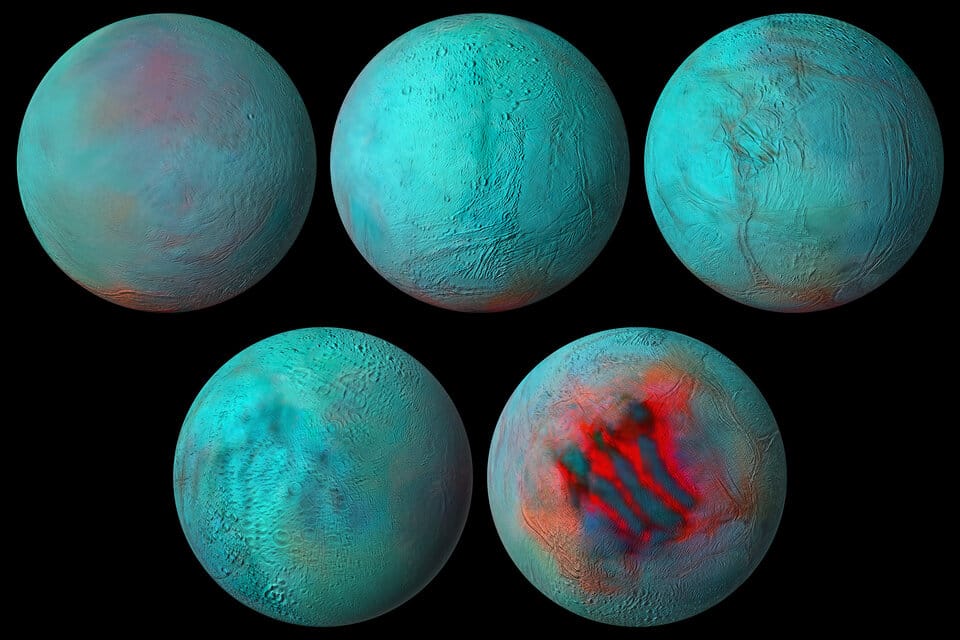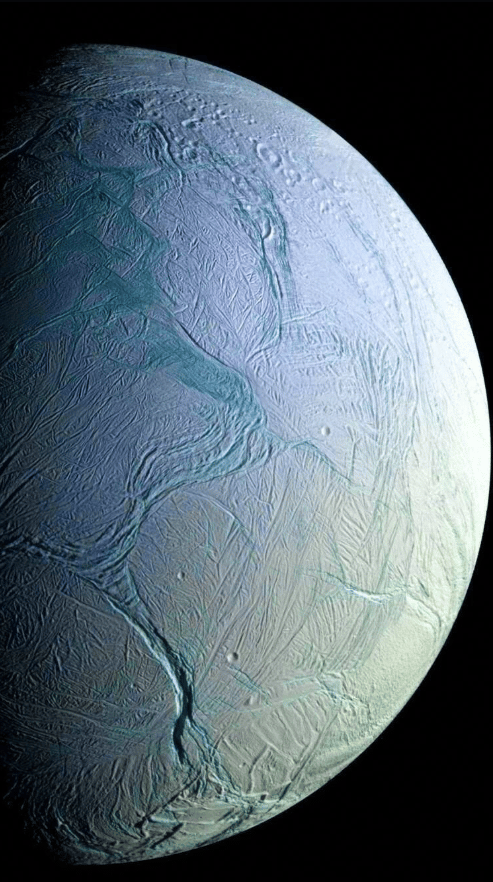- Space Known
- Posts
- Enceladus’s Hidden Ocean & A Busy Week in Space Exploration
Enceladus’s Hidden Ocean & A Busy Week in Space Exploration
From icy moons to interstellar comets — what’s happening in space this week
Introduction
Welcome to another exciting week!
Content:
Best image of the week
This week’s top image captures the icy surface and plume-activity regions of the moon Enceladus, one of Saturn’s most intriguing satellites. Recent supercomputer simulations using data from past missions reveal the hidden subsurface ocean beneath Enceladus’s crust. Scientists have mapped how cryovolcanic geysers eject ice and water into space, gradually depleting the moon’s outer shell. The visuals show the so-called “tiger stripe” fractures from which plumes emerge, giving a rare glimpse into a deep subsurface watery environment that might – just might – harbour conditions favourable for life.

Words from our sponsor
If you work in fintech or finance, you already have too many tabs open and not enough time.
Fintech Takes is the free newsletter senior leaders actually read. Each week, we break down the trends, deals, and regulatory moves shaping the industry — and explain why they matter — in plain English.
No filler, no PR spin, and no “insights” you already saw on LinkedIn eight times this week. Just clear analysis and the occasional bad joke to make it go down easier.
Get context you can actually use. Subscribe free and see what’s coming before everyone else.
Last week news
Bold Date: November 3, 2025 — A major discovery: researchers detected phosphine gas in the atmosphere of the brown dwarf Wolf 1130C, located about 54 light-years away. The presence of phosphine in such a low-metallicity environment challenges existing models of atmospheric chemistry in brown dwarfs and exoplanet analogues.
Bold Date: November 5, 2025 — The return of the Shenzhou‑20 crew to Earth was delayed after their spacecraft was apparently struck by a piece of orbital debris. The mission aboard the Chinese station Tiangong remains in a holding pattern while engineers assess risks.
Bold Date: November 6, 2025 — The interstellar object 3I/ATLAS continues to surprise scientists, having brightened unexpectedly as it passed by the Sun. Its unusual behaviour has sparked discussions about the composition of interstellar visitors and our ability to study them.
Bold Date: November 8, 2025 — SpaceX launched a batch of 29 Starlink satellites aboard a Falcon 9 for the mission “Starlink 10-51”. The booster successfully landed on the drone ship “A Shortfall of Gravitas”, marking another increment in reusable launch technology.
Bold Date: November 9, 2025 — Blue Origin scrubbed the planned launch of its second-flight New Glenn rocket carrying the twin Mars probes of the ESCAPADE mission due to adverse weather and regulatory constraints amid a U.S. government shutdown.
Upcoming events
Bold Date: November 12, 2025 — Tentative launch window for Blue Origin’s New Glenn NG-2 rocket carrying NASA’s ESCAPADE twin satellites (“Blue” and “Gold”) bound for Mars. This mission aims to explore Mars’ magnetic environment and pioneer new trajectories for future crewed missions.
Bold Date: November 17, 2025 — Peak of the Leonid Meteor Shower. Sky-watchers in dark locations may catch a good display as the Moon rises late, offering favourable conditions.
Bold Date: November 10–11, 2025 — A G2 geomagnetic watch is in effect due to incoming coronal mass ejections (CMEs) from the Sun; aurora-watchers at high latitudes may get a show.
Words from our sponsor
Learn AI in 5 minutes a day
What’s the secret to staying ahead of the curve in the world of AI? Information. Luckily, you can join 1,000,000+ early adopters reading The Rundown AI — the free newsletter that makes you smarter on AI with just a 5-minute read per day.
Mobile wallpaperToday’s wallpaper features a breathtaking view of Enceladus, capturing the icy moon’s surface fractures and active plumes of water vapour and ice grains. The underlying scientific context: the moon harbours a global subsurface ocean beneath its icy crust, as shown in recent models and data analyses. This underwater ocean environment, venting into space, makes Enceladus one of the most compelling locations in the Solar System for astrobiology. You can download a high-resolution version of this image (optimised for mobile screens) from the relevant space agency’s archive. Ideal for a home or lock screen, it blends scientific curiosity with visual beauty. The icy terrain and active geology serve as a reminder that even small moons harbour dynamic processes. |  |
Submissions + Feedback
If you want to get featured in the next issue, reply to this email with your images and wallpapers to this email.
Also, it would mean a lot if you shared a topic you want me to cover.
How was today's post |


Reply